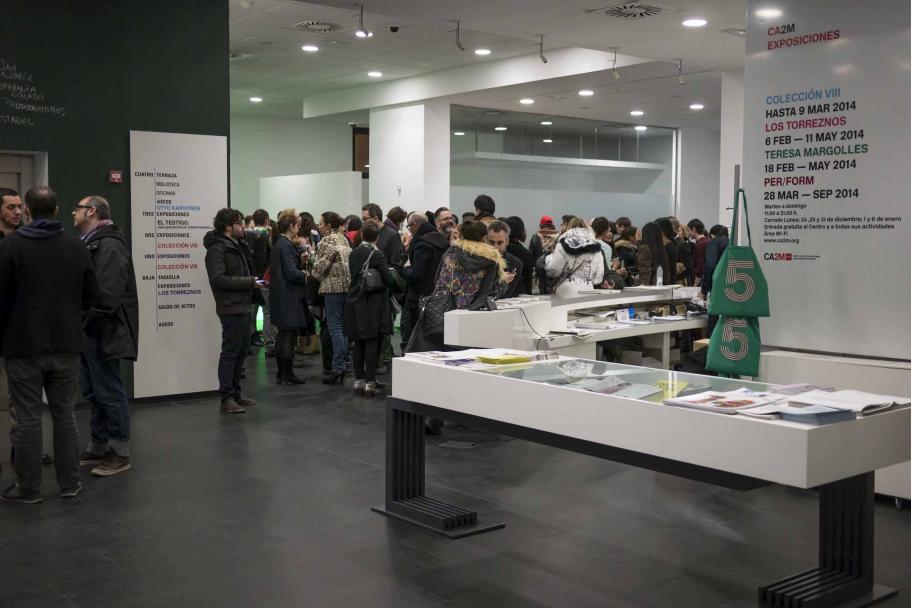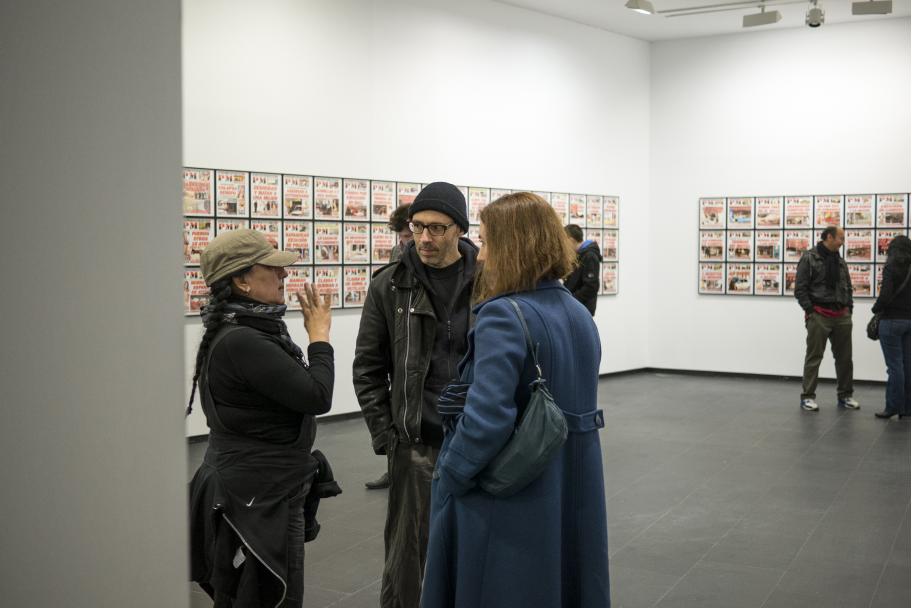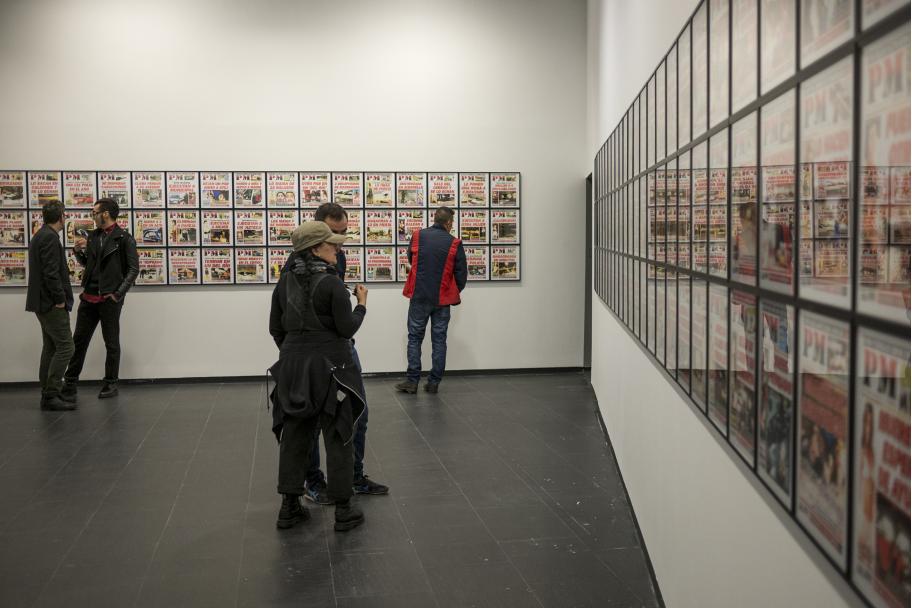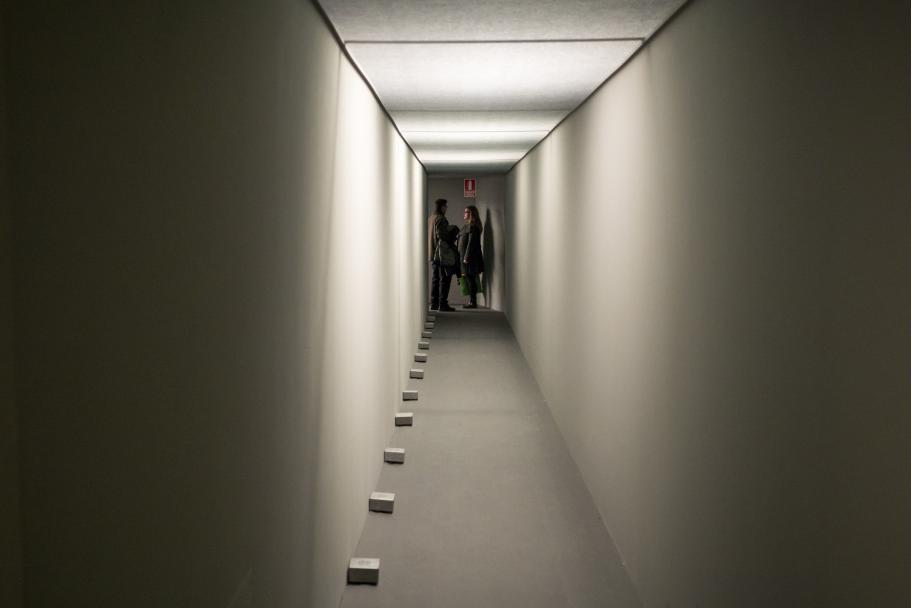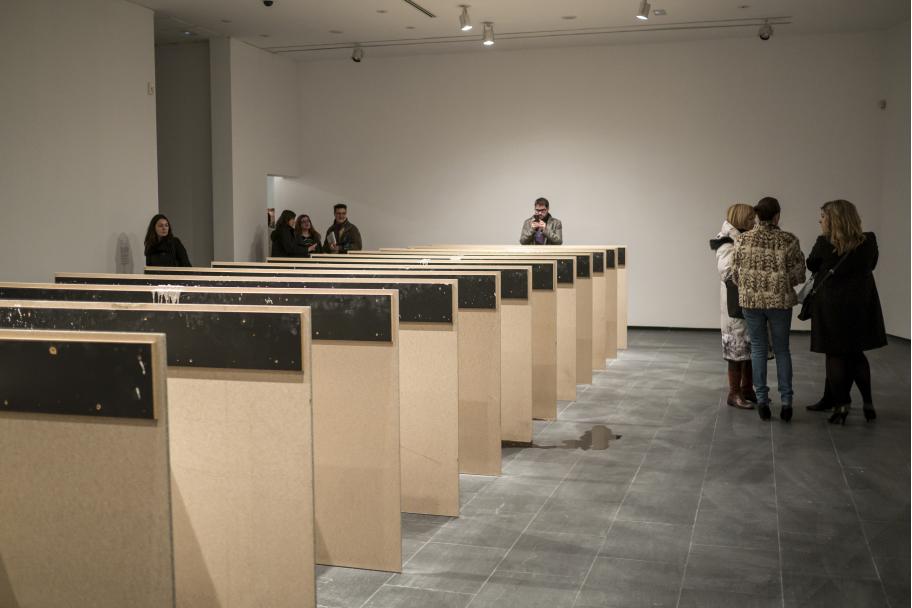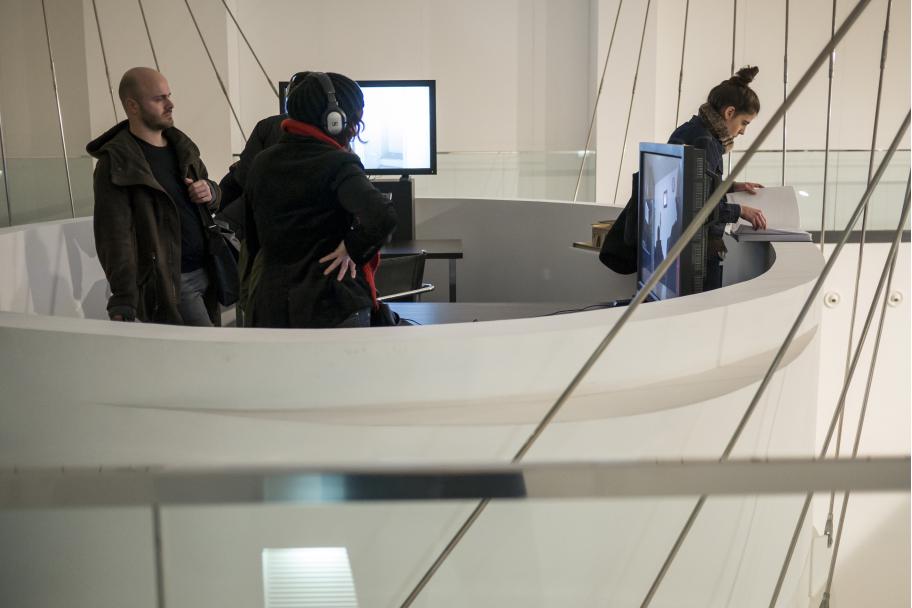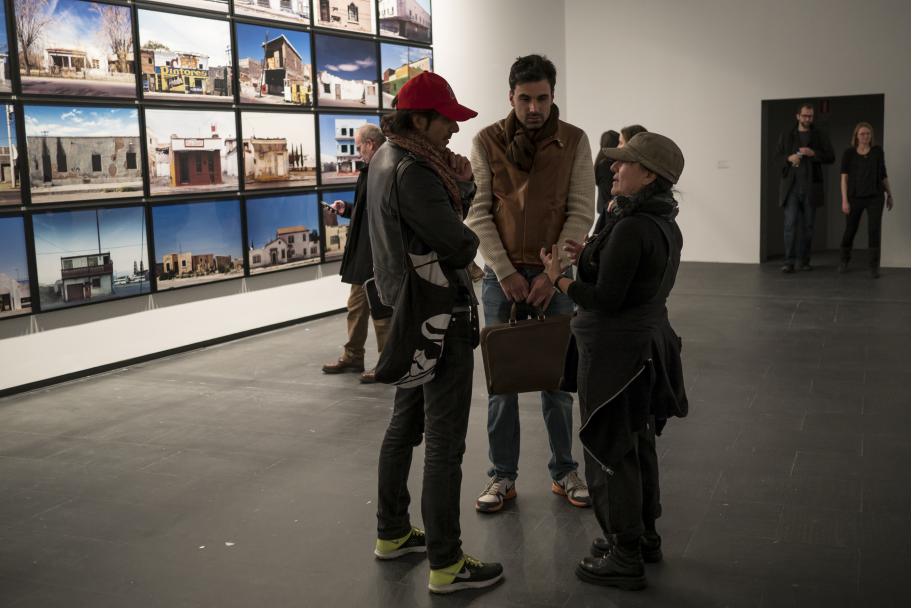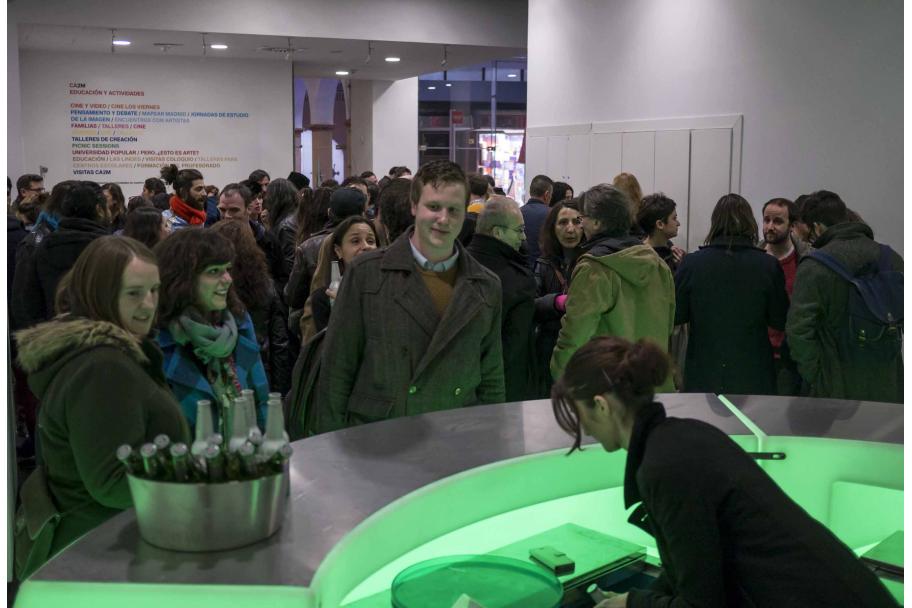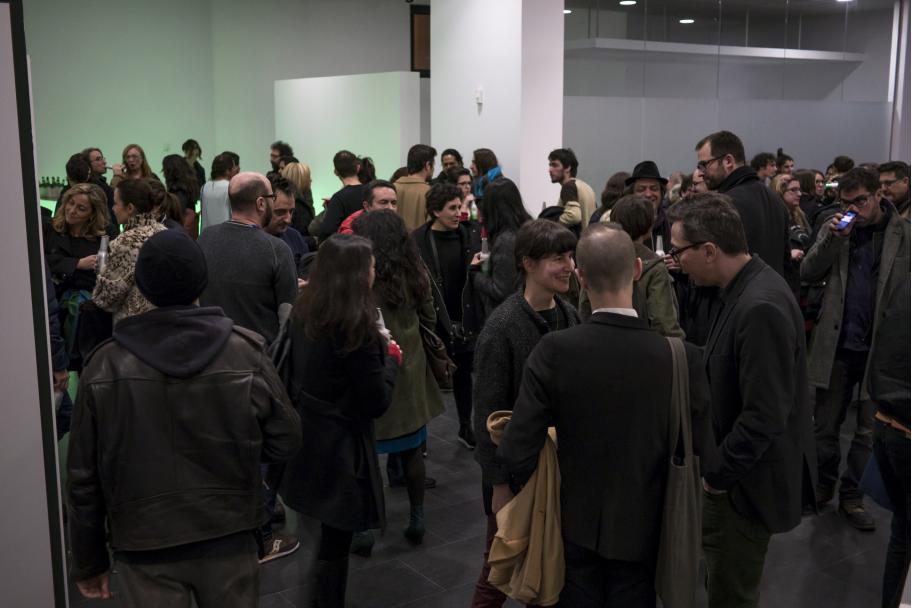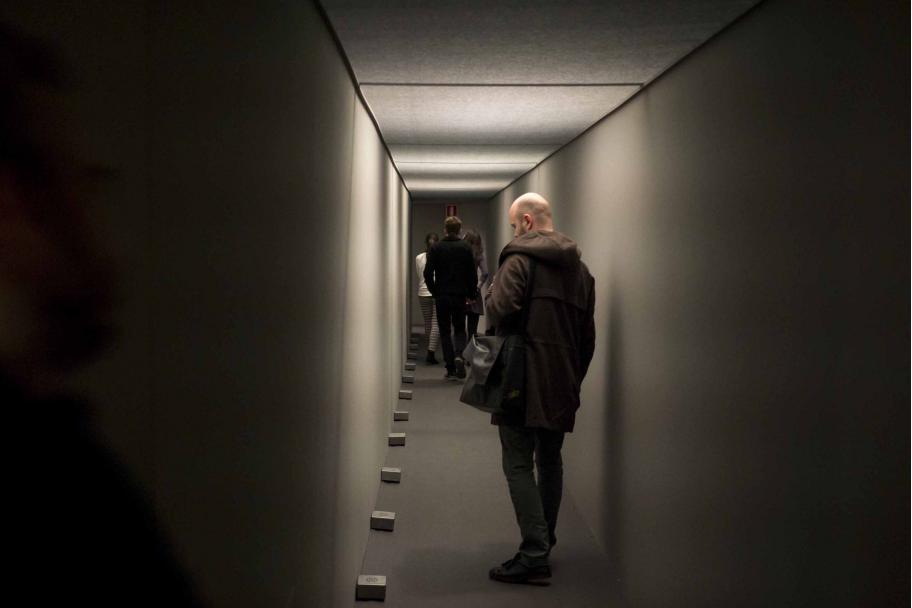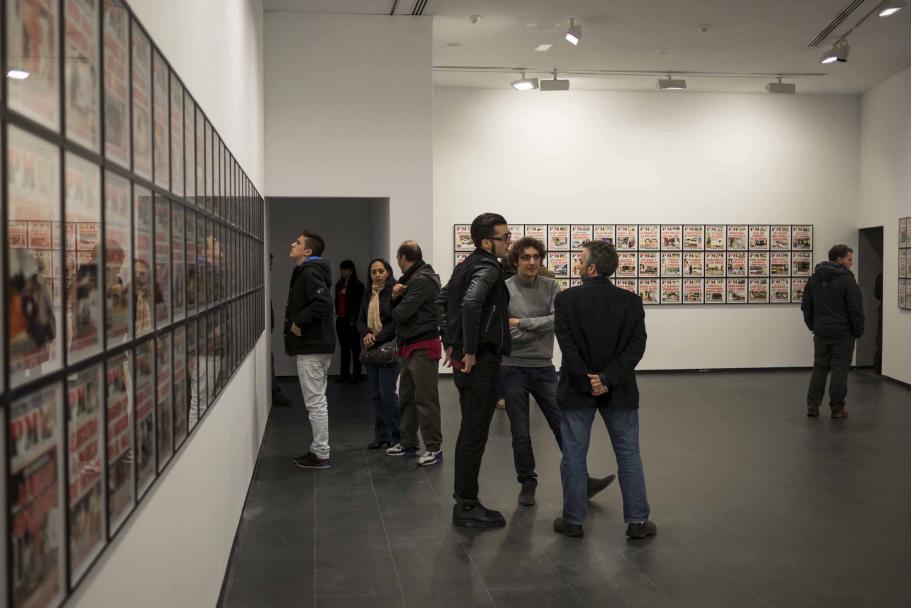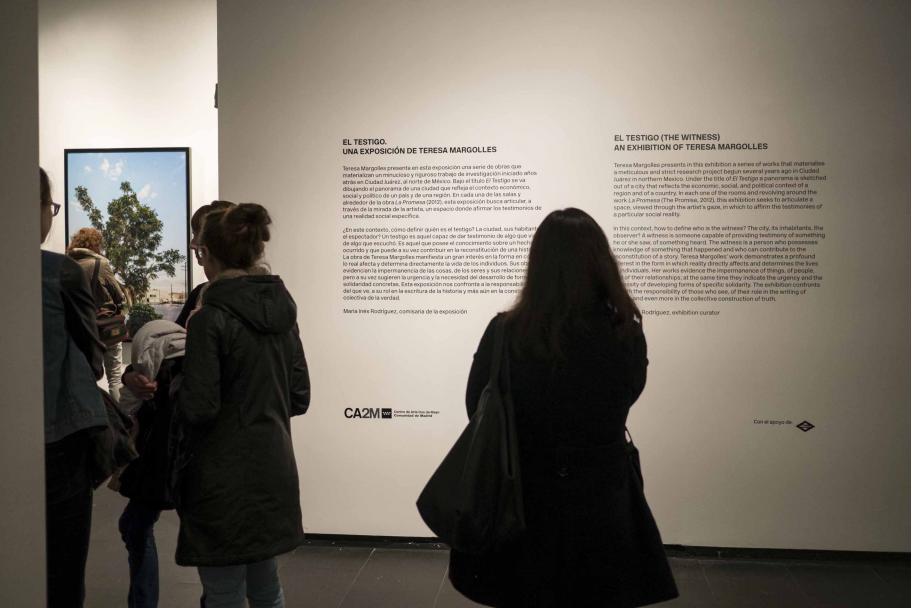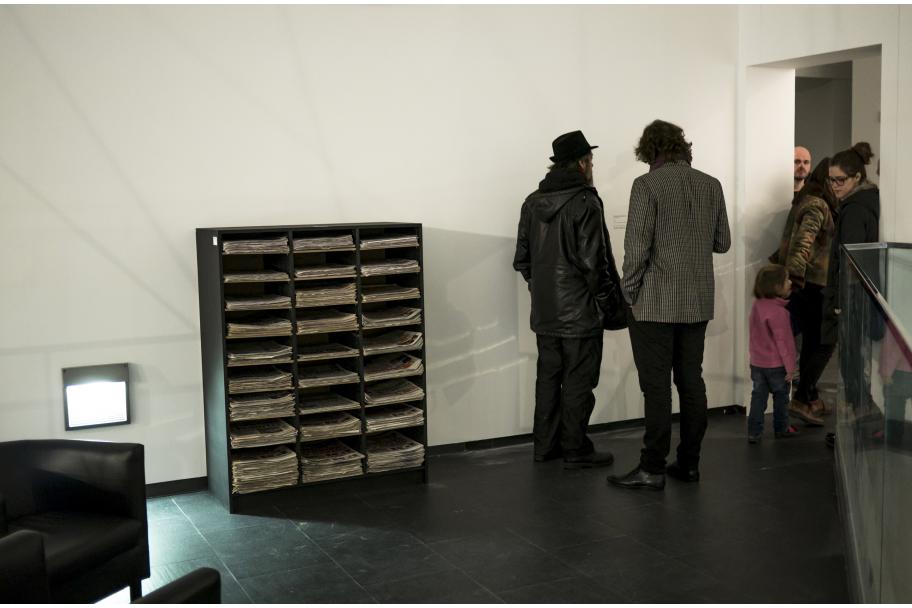- CA2M MUSEUM
- exhibitions
- THE WITNESS
THE WITNESS
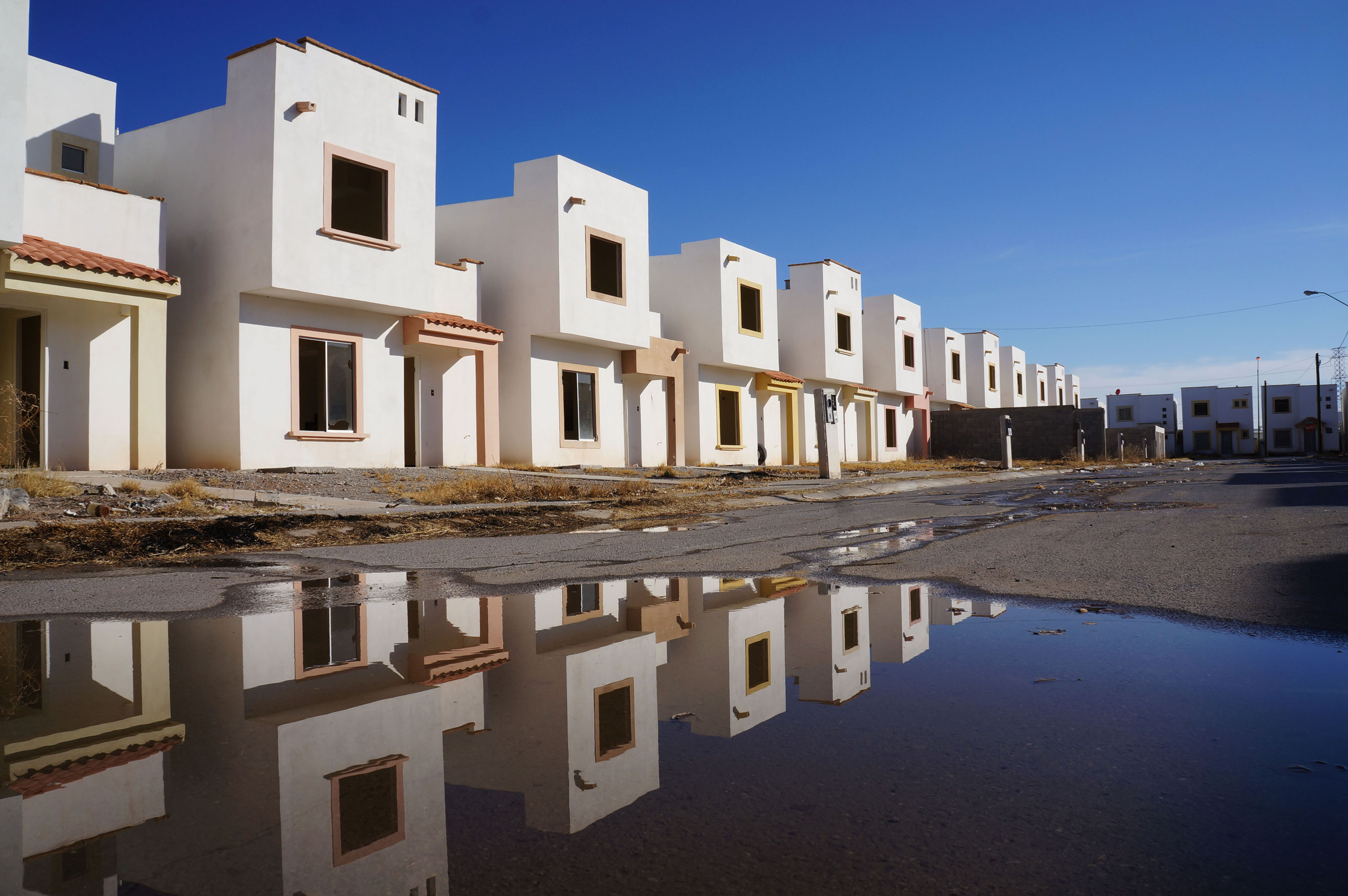
Teresa Margolles’ (Culiacán, Mexico, 1963) work shows her great interest in the way reality affects and directly determines the lives of individuals. Her pieces prove the impermanence of things, beings and relationship, and at the same time they suggest the urge and the need to develop specific solidarity actions. For CA2M, Margolles features a series of pieces resulting from a thorough and meticulous research process that she began years ago in Ciudad Juárez, North of Mexico. Through the artist’s look, in each of the rooms and revolving around La promesa (The Promise) [2012], the exhibition aims at creating a space to state the testimonies of a specific social reality.
The works we find when we go through the exhibition and that go with La promesa, such as En torno a la pérdida (Around Loss) [2009 — 2013], Esta finca no será demolida (This Property Won’t Be Demolished) [2011], PM 2010 (2012) and El testigo (The Witness) [2013], which gives its title to the exhibition, allow to provide a general overview and context for the economic, social and political environment of a particular city and a particular region. There has been a worsening in the events that affect not only Ciudad Juárez but the whole region, making clear the impact of drug-trafficking, employment insecurity, corruption and violence resulting from these events. Although it’s true that the city and its citizens live in a climate of insecurity and uncertainty, it is also important to point out a kind of rebirth and hope through projects that try to change the citizens’ daily lives.
In a context such as Ciudad Juárez, how can we define who is the witness? Is it the city, its citizens, the viewer? A witness is that who can give testimony of something they saw or heard. A witness knows what happened and can thus contribute to reconstruct a story. This story is not objective; it’s a personal story, a story that an individual uses to find a place of reaffirmation. The testimony then becomes a narration and a quest and is thus founded on a real event, but one that has passed and is marked by subjectivity.
The piece El testigo (The Witness) [2013] that opens this exhibition, is represented by the image of a tree, which becomes a silent observer of the reality around him. We could state that Teresa Margolles images belong to two incompatible categories: image as an artwork and image as evidence. Regarding evidence, it is through the dialogue between the object and the subject how the truthfulness and admissibility of an image is established; regarding artwork, the legitimation process goes beyond the legal framework. Once the legitimacy of the image has been established as an art piece, we can determine the testimony that the piece conveys and tackle the issue of the subject’s ethical position when facing this statement.
In the installation called PM 2010 (2012) Teresa Margolles compiles each one of the covers published by PM, one of the most important yellow press newspapers of the city. 2010 was considered a particularly violent year by observers with as many as 3.075 murders, a figure that has significantly dropped in the last three years. The covers show the bodies side by side with photographs of naked women and prostitution ads, a typical practice for this type of newspapers. As a result, the artists shows bodies that represent two different ways that the media use to manipulate the body, that of death and that of sex, both coming from one same reality, as pointed out by Óscar Gardea in his text for the exhibtion’s catalogue.
Esta finca no será demolida (This Property Won’t Be Demolished) [2011] is a series of 30 color photographs that show abandoned and ruined houses that witness emptiness after being deserted by their inhabitants, who were forced to emigrate. According to a study carried out by Ciudad Juárez University, in 2011 there were more than 115,000 abandoned houses in the city and over 220,000 people had moved out of the city due to violence.
In the last ten years, Teresa Margolles has broken down the signs of Ciudad Juárez’ constant mutation process in an artistic project. The artist has filed documents and catalogued images, sounds, testimonies and objects in order to prove a symptomatic reality not only limited to Ciudad Juárez or Mexico, but that is also part of a global world. During her search she has –asymmetrically- dialogued with the government pointing out the meeting, or lack of it, between the truth and the facts and how we place ourselves as witnesses, viewers and subjects with an agonistic look. Rather than trying to rebuild what happened using the remains of what is left after desertion, Margolles looks for a place to create a counter-image that manages to question the authority and legitimacy of official images.
La promesa (The Promise) is a piece that becomes an example of this process. This installation was set in 2012 for the first time to be exhibited in the MUAC (Museo Universitario de Arte Contemporáneo MUAC), in Mexico D.F. La promesa is built using the real and fragmented remains of a house in Ciudad Juárez, one of the many that were sold after the wave of violence that unleashed in the region in the last decade and that emptied full neighborhoods. The house, demolished, broken, crushed and now transformed into a horizontal sculpture, will scatter around the exhibition’s space thanks to volunteers that will move its fragments until they fill the room. This blunt and poetic reflection on unmet expectations of personal and collective happiness makes us face a community that remains to be built.
En torno a la pérdida (Around Loss) [2009-2013] is a video piece that is part of the La promesa documentation files. The video shows several testimonies gathered in the last three years from different Ciudad Juárez citizens coming from different social backgrounds. These citizens are the ones who talk about their experience and their relationships with their houses: what the house represents when it’s bought, inhabited, and the implications of losing or abandoning it. These testimonies show the disappointment and frustration of a broken promise.
This exhibition, revolving around La promesa, also proposes a place to reflect on experience and the testimony resulting thereof. The pieces open the space to the subjectivity of men and women who do not write the official history but who are the ones who have to live through it. El testigo (The witness) makes us face our responsibility as viewers, as the ones who play a major role in writing history and increasingly so in the collective quest for the truth.
Most outstanding Mexican artist of her generation, Teresa Margolles´s work has been displayed in solo exhibition in venues such as Museum für Moderne Kunst in Frankfurt/Main, Kunstverein für die Rheinlande und Westfalen in Düsseldorf, Frac de Lorraine or at Kunstmuseum in Berna. In 2009 Margolles represented Mexico at the Biennal of Venice with her installation “¿De qué otra cosa podemos hablar?.” She has also taken part in many International Biennals: Göteborg, 2003; Kwangju, 2004; Baltic Triennal, Vilinius, 2005; Liverpool, 2006, as well as in collective exhibitions as in ECO – Arte Contemporáneo Mexicano, MNCARS, 2005; Indelible Images “trafficking between Life and Death”, Museum of Fine Arts, Houston; Mexico City: An Exhibition about the Exchange Rates of Bodies and Values, P.S.1 Contemporary Art Center, New York.
![]()
